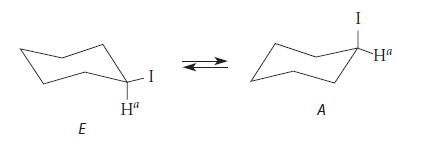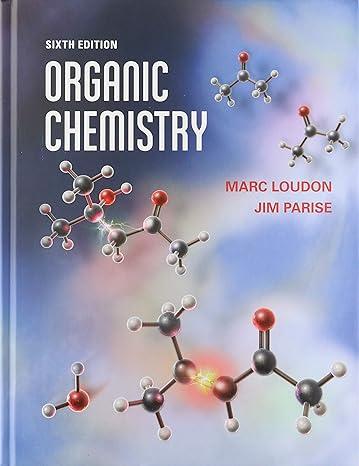The NMR spectrum of iodocyclohexane was taken at 280 C. At that temperature, the chair interconversion is
Question:
The NMR spectrum of iodocyclohexane was taken at 280 °C. At that temperature, the chair interconversion is slow and each chair conformation can be observed separately.
The resonance of proton Ha is well resolved from the rest of the spectrum because of its unique chemical shift. The resonance of proton Ha in one of the conformations at –80 °C is shown in Fig. P13.66.
(a) Which conformation has the Ha resonance shown in Fig. P13.66? Explain.
(b) How would you expect the resonance of Ha in the other conformation (not shown) to differ from the one shown in Fig. P13.66?
(c) The integrals of the Ha resonance in the two conformations at –80 °C are in the ratio 3.39 : 1. What is the DG for the chair interconversion of the two conformations?
From what you know about conformational analysis, which conformation is the major one?
Step by Step Answer:






